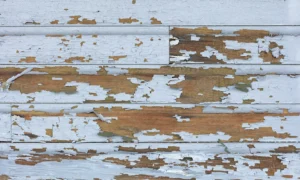
If you’re wondering whether your property contains lead paint, you’re not alone.
Lead paint remains one of the most serious environmental hazards in [city] homes and businesses. Even a little lead in your home or business can lead to health problems, possibly damaging your brain and organs.
It enters your body when you breathe it in or swallow it, where it moves through your blood and settles in your bones. Its toxicity can be permanent and harmful, especially in children.
That’s why we provide lead testing services at [company]. Our results are accurate and thorough, and we have a quick turnaround.
Why was lead paint used?
Manufacturers added lead to paint because it was very durable and made finishes last decades longer than other options. Lead paint resists moisture well, which made it great for bathrooms, kitchens, and outdoor areas in our rainy [city] climate.
When did they stop using lead paint?
The U.S. banned lead paint in homes in 1978. But some industrial and marine applications still use lead-based products. But this still means that any building constructed before 1978 should be thoroughly assessed and tested by experts.
Do all homes built before 1978 have lead paint?
Not all buildings built before 1978 have lead paint, but many do. So, testing is important.
According to the EPA, homes built between 1960 and 1978 have approximately a 24% chance of containing lead paint. For homes built between 1940 and 1960, that risk jumps to 69%. Buildings constructed before 1940 face an 87% likelihood of lead paint presence.
How to Identify Lead Paint (Without Kits)
Look for these signs on painted surfaces:
- Alligatoring or scaling paint patterns
- Thick, multiple layers of paint on older surfaces
- Chalking or powdering paint surfaces
- Lead dust
But visual inspection alone isn’t enough to determine lead paint presence. Lead paint can hide beneath multiple layers of newer paint, making it invisible to the naked eye.
Store-bought lead test kits often use chemicals that change color in the presence of lead. These can show early signs, but they have major limits.
DIY testing kits might not reach all paint layers and can be influenced by other metals. Plus, they don’t give the precise results needed for regulations or renovation plans.
DIY vs. Professional Testing
Basic DIY testing kits may miss critical contamination in several ways. Store-bought swab tests only find lead on surfaces and might miss any lead presence if paint layers are thick or sealed well. They also cannot measure the concentration of lead present or identify lead in dust or soil.
Disturbing lead paint during DIY testing has risks. You might create lead dust by scraping or sanding, spreading contamination to other areas of your property. Also, you risk exposing yourself and others to lead particles if you lack proper protective equipment.
Professional testing has several advantages, including:
- EPA-approved methods and certified lead testers
- Precision technology for accurate detection
- Legally defensible results for compliance
- Comprehensive lead inspection reports
What to Do If You Have Lead Paint
- Contain the hazard area.
- Protect vulnerable family members.
- Call a certified lead contractor.
- Collect a paint chip sample to drop off at a testing lab (if you can do so safely).
Laboratory Analysis
A testing lab, like [company], can tell you right away if you have lead paint if you provide a sample. Just remember the following when you gather your sample:
- To avoid dust, collect paint chip samples safely and use proper containment methods.
- Each sample needs clear labeling indicating its exact location in your property.
- Samples should include all paint layers down to the substrate material.
Your Health Can’t Wait When It Comes to Lead
When you need to find out if a health hazard like lead exists in your space, speed is of the essence. The best thing to do is have it tested by professionals. At [company], we offer lead testing services and sample drop boxes. And you’ll get complete results in 24-48 hours.
Our certified lead testers use XRF (X-ray fluorescence) analyzers to detect lead through multiple paint layers. If lead is found, we can also connect you with qualified remediation contractors.
So don’t let uncertainty about lead paint put your health at risk. Reach out to our team today.
[backlink]
